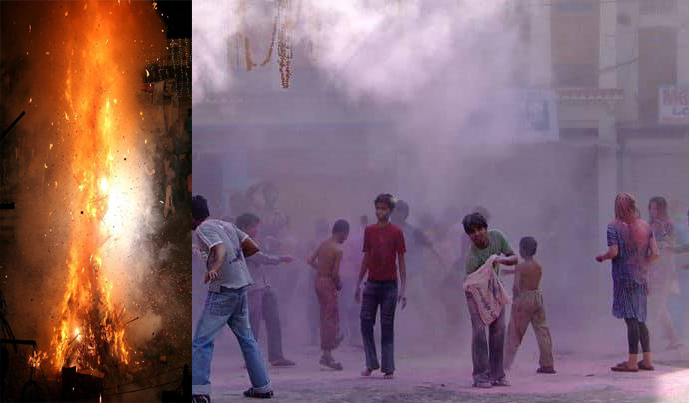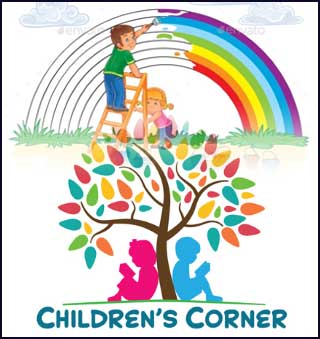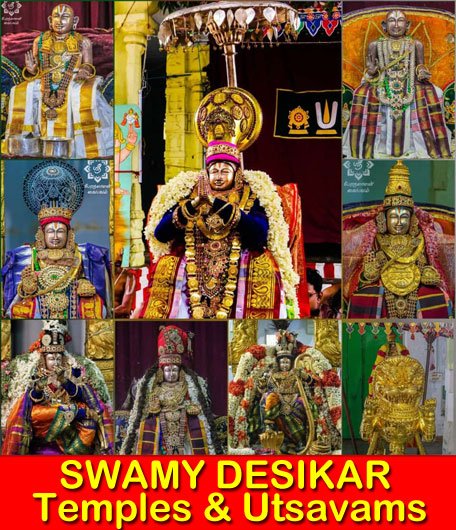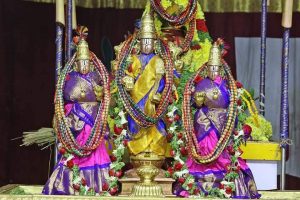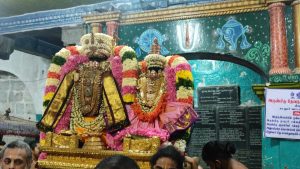Holi is a popular ancient Hindu festival. It is also called as the ‘festival of Love’, festival of colours’ and the ‘festival of spring’. The festival celebrates the eternal and divine love of Radha and Krishna The renowned festival that begins on March seven this year would be celebrated for a few days in North India and in South India, it would be limited to one day. Holi signifies the triumph of good over evil. The renowned festival also highlights the victory of Lord Maha Vishnu as Narasimha Narayana over Hiranyakashipu. The well-known festival is predominantly celebrated in South Asia, but has alsospread its wings to other regions of Asia and parts of Europe.
Holi celebrates the arrival of spring, the end of winter, the blossoming of love and for a large number of devotees, it is an occasion to meet their relatives, friends and well-wishers, besides playing and, laughing, with an inclination to forget and forgive the hatchets, if any, and to renew the broken relationships. The festival also celebrates the beginning of a good spring harvest season. Holi lasts for a night and a day, starting on the evening of Purnima (Full Moon Day) falling in the Hindu calendar month of Phalguna, which falls around the middle of March in the Gregorian calendar.
The first evening of the unique festival is known as Holika Dahan (burning of Demon Holika) or ‘Chhoti Holi’ and the following day as Holi, Rangwali Holi, Dol Purnima, Dhuleti, Dhulaudi, Ukuli, Manjal Kuli, Dol Purnima, Dhuleti, Dhulandi, Ukuli, Manjal Kuli, Yaosang, Shigmo or Phagwah, Jajiri. Holi is also popular outside of India. In addition to India and Nepal, the marquee festival is celebrated by Indian subcontinent diaspora in countries such as, Suriname, Guyana, Trinidad and Tobago, Jamaica, South Africa, Mauritius, Fiji, South Africa, Malaysia, Singapore, the United Kingdom, the United States, the Netherlands, Canada, Australia and New Zealand.
In recent years, the popular festival has spread to parts of North America as a spring celebration of love, frolic, and colours. Holi celebrations start on the night before Holi, where people gather and perform religious rituals in front of the bonfire, and pray that their internal evil be destroyed the way Holika, the sister of the demon king Hiranyakashipu, was killed in the fire. The next morning would be celebrated as Rangwali Holi (Dhuleti), a free-for-all festival of colours, where people smear each other with colours and drench each other.
It is pertinent to note that bearing the festival in mind the people use water guns and water-filled balloons by mixing colour to play with each other, marking the fruitful occasion in the open streets, parks, outside temples and buildings. A section of devotees would carry drums and other musical instruments and proceed from place to place by singing and dancing together. The people would make use of the god-sent opportunity to visit the residences of not only their relatives and friends, but also make a courtesy visit to their detractors’ residences, too, to share their delicacies, food and drinks.
Holi, unfortunately, is not popular in South India, as a large number of people, especially in Tamil Nadu, are not even aware of its existence and significance. However, with a huge presence of the North Indian community and migration labourers in the state in the recent past, the people are slowly realising the importance and significance of Holi, besides making an effort to participate in the fabulous festival every year. They are also evincing interest on the beauty attached to Holi by Bollywood industry by singing some memorable Hindi songs, ‘Holi Aye Re’, ‘Aaaj na chodenge basham holi and ‘Govinda Ala Re’, among others.
K.V. Venugopal


